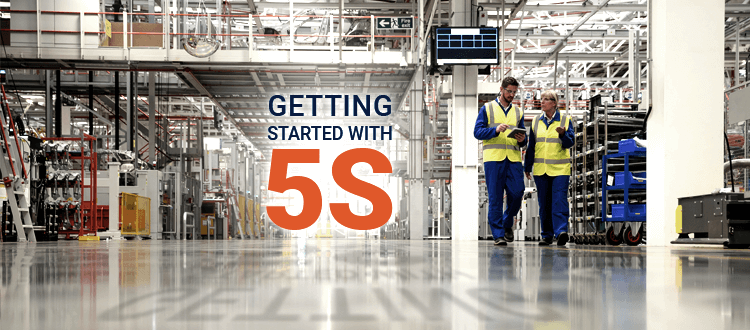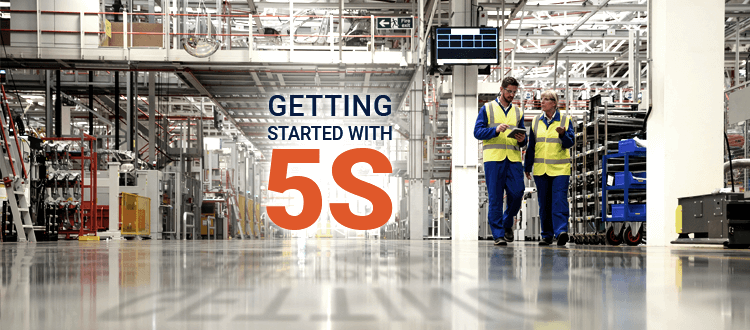5S Methods Enhance Green Manufacturing
03
February,
2023
3 MINUTE READ

Manufacturing industries play a tug-of-war between the public and private sectors, each demanding the fastest, cheapest, and highest-quality products ? with the lowest environmental impact.
Cap-and-trade emissions policies, paired with limited natural resources, have changed the face of modern industry. As a result, lean companies, particularly those with established 5S systems, are one step ahead of the green curve.
"Lean initiatives work well with green initiatives because you're looking at costs and how much waste is in the process," said Michael Sinocchi, executive editor with Productivity Press, a publishing company in New York.
Productivity Press was founded more than 20 years ago when editors began translating the works of leading Japanese industrial experts on the Toyota Production System (TPS), the heart of the improvement strategy now called "lean manufacturing."
"With lean the goal was to drive waste out of the process and throw those savings back into the product by charging customers less, having shorter lead times, and spending less on inventory," Sinocchi said. "Now it's driven by demand and resources."
What is Green Manufacturing?
Green manufacturing goes one step further than lean, examining the environmental impact of processes and materials used in manufacturing. The correlation between companies that implement lean manufacturing processes and green manufacturing is strong, as a reduction in waste saves both time and materials.
Federal agencies like the Environmental Protection Agency (EPA) have examined the correlation between 5S and green manufacturing. The EPA reports 5S systems offer potential environmental benefits:
- Painting machines and equipment light colors and cleaning the windows, often done under the Shine pillar, decreases the energy needed for lighting.
- Painting and cleaning makes it easier for workers to notice spills or leaks quickly, decreasing spill response time. This can significantly reduce waste generated from spills and clean-up.
- The removal of obstacles and the marking of main thoroughfares decreases the potential for accidents that could lead to spills and associated hazardous waste generation (such as spilled material, absorbent pads, and clean-up materials).
- Regular cleaning, as part of the Shine pillar, decreases the accumulation of cuttings, shavings, dirt, and other substances that can contaminate production processes and result in defects. Reduction in defects leads to significant environmental benefits because energy and materials are no longer wasted in producing and disposing of defective products.
- 5S implementation can significantly reduce the square footage needed for operations by organizing and disposing of unused equipment and supplies. Less storage space means less energy needed to heat and light the space.
- Organizing equipment, parts, and materials so they are easy to find can significantly reduce unneeded consumption. Employees are more likely to finish one batch of chemicals or materials before opening or ordering more, resulting in less chemical wastes needing disposal.
- 5S visual cues (such as signs, placards, scoreboards and laminated procedures in workstations) can be used to increase employee understanding of proper waste handling and management procedures, as well as workplace hazards and appropriate emergency response. 5S techniques can be used to improve labeling of hazardous materials and wastes.
- Integration with 5S visual cues and operating procedures can improve employee environmental management, through the organization of tools and materials into labeled and color-coded storage locations, as well as "kits" that contain just what is needed to perform a task.
Examining Waste Beyond the Workspace
When green manufacturing is incorporated with 5S best practices, companies examine efficiencies not only within an individual workspace but through the overall life of their products.
"Initially companies were only focused on the front end of a product...how to be the best, the cheapest, and the fastest to get it out the door to sell it," Sinocchi said. "Now companies are looking at the overall life of the product: what environmental impact it has, and whether the same production resources will be available 10-15 years from now."
Sinocchi said electric cars can be used as a case study. When Ford offered its first electric car, Toyota had already released the Prius 2.
"Companies like Ford were waiting for the customer demand," he said. "Toyota examined the cost of resources like oil, and realized this market will change 10-15 years from now...Companies can either sit back and say something will change, or somehow plan for it."
Visit the Productivity Press website for reading resources about 5s and green manufacturing. Sinocchi recommends the following titles to increase your lean machine: "The Green Factory: Creating Lean and Sustainable Manufacturing," "Creating a Lean and Green Business System: Techniques for Improving Profits and Sustainability," and "Lean Waste Stream: Reducing Material Use and Garbage Using Lean Principles."
Our free 5s Best Practice Guide provides you the information needed to implement the 5s System in your green manufacturing facility. Download your free copy below!
RELATED RESOURCES

5S Floor Marking
At its most fundamental level, 5S is about eliminating waste and getting a facility cleaned up and organized. ...
Read
Getting Started with 5S
Staying on top of operational efficiency is an ongoing challenge. The lean 5S methodology is a powerful ...
Read
Getting Started with 5S Labeling and Marking
Staying on top of operational efficiency is an ongoing challenge. The lean 5S methodology is a powerful ...
Read.png)


